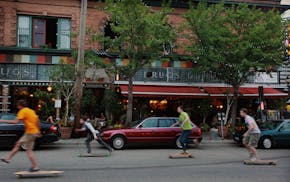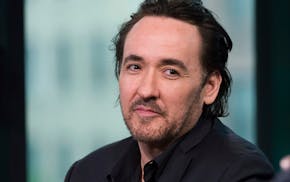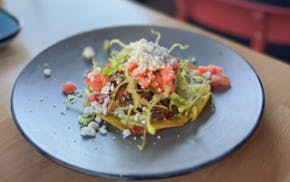On June 30, West Seventh Pharmacy in St. Paul is closing after 110 years. The loss of a drugstore isn't particularly noteworthy these days — Walgreens has announced it will close 1,200 stores over the next few years, and archrival CVS is shuttering 271 in 2025. But a family-owned neighborhood drugstore being closed is different, especially when it has been around for all those decades. Its relationship with the community is woven in a way the chain pharmacies can't quite match.
"It's a place where people know your name," says Jeff Johnson, who has owned West Seventh since 1999. "Gosh, every time someone comes in, you sit and chat. Your kids grow up together, you're from the same neighborhood."
That personal touch is the beauty of indie drugstores. But that connection is disappearing as chain pharmacies, driven by the bottom line, replace family-owned stores.
The rise of chains
Chain drugstores have been around longer than you might think. A hundred years ago, when the family-owned West Seventh at 1106 W. 7th St. was building its relationship with the neighborhood, chain stores were already battling for the drug dollar.
The future of the independents can be summed up in a 1903 ad campaign sponsored by a Minneapolis drugstore, Voegeli Bros. Drug Co. To drum up public excitement for a new dyspepsia pill, it took out a series of ads for Rexall.
Rexall was a product of United Drug Co., a purchasing cooperative founded in 1903 by Louis K. Liggett. By the mid-1910s the Voegeli chain called its three local outlets Rexall Stores. They'd be steamrolled by Liggett's eponymous chain, L. K. Liggett Co., which bought Voegeli in 1917 and rebranded the stores as "The Safe Drug Store."
Voegeli, the local store, was gone.
Walgreens entered the Twin Cities market in 1925, buying 10 stores of the Public Drug Store chain. By the 1930s there was a new local player — Snyder's Drug Stores.
The Minnesota-based chain struck a broad populist chord in its public persona. The ads proclaimed that the stores were "cut-rate," back before that became a criticism for "cheap and low-quality." Snyder's called its stores "drug-a-terias," a concept defined as a place where "you serve yourself or have a clerk help you."
The West Seventh store, by the way, was never affiliated with one of the chains.
"When I started in 1980, there was Snyder's, and that was about it," Johnson said.
Liggett was out by 1950, which is a reminder that chains come, and chains go. Snyder's was sold to Walgreens in 2010, after 80 years in the game.
More than just drugs
Of course, drugs were the main attraction. The products of the 1920s, mostly unfamiliar to us today, were displayed behind big plate glass windows for people in the neighborhood to see and buy. They included Carter's Little Liver Pills, Doan's Kidney Pills, Beecham's Liver Pills, Nuxated Iron, Bromo Seltzer, Musterole, Maltoleum — and aspirin.
But drugstores also sold household goods, and Christmas ads featured toys. And it was the go-to place for buying greeting cards, cosmetics and television tube testers. In fact, people probably visited the drugstore more often for things other than its stated function.
The lunch counters and fountains at drugstores were a common draw, as well. Gray's Campus Drug in Dinkytown was noted for its lunch counter, where Bob Dylan was said to have paused for cherry Cokes during his time in the University of Minnesota neighborhood.
West Seventh's Johnson was trained as a pharmacist, but buying a drugstore meant he had to learn new trades, including stocking gifts and candy. He didn't go with standardized mandates with a corporate feel from on high like in chain stores. Instead, he resorted to an individual touch and turned to those who were gift buyers for advice and ideas.
"We reached out to our friends when we opened, and they helped," said Johnson, who said he was closing the store because it was time to retire.
The unknown future
If a drugstore building was erected in the early 20th century, chances are it was retail on the ground floor, and offices or apartments up above. There was built-in clientele, and so it was with West Seventh.
"There's a few apartments on the top of the store," Johnson said. "They have been there for a long time, good tenants. Prior to the apartments, there was a doctor's office and a dentist office."
Talk about a one-stop medical oasis. There are quick clinics at modern chain drugstores, as well, but try getting a cavity filled at CVS.
The loss of a neighborhood drugstore is always a keenly felt diminution. The old neon falls dark; the empty windows depress the street. Something else might fill the space eventually, but it probably won't sell antibiotics and birthday cards.
You can find your medicines or get your prescription filled elsewhere, of course. But it might be a less friendly place. The old place might even have had some Nuxated Iron in the back, if you asked.

What we lose when chain drugstores replace family-owned independents
![George Floyd's daughter Gianna Floyd, 6, looks to her mother Roxie Washington during a press conference at Minneapolis City Hall. ] LEILA NAVIDI •](https://arc.stimg.co/startribunemedia/WSDMNXVK3VZJDLDP3BTMCSMXNU.jpg?h=91&w=145&fit=crop&bg=999&crop=faces)
Medcalf: Hateful comments made after recent column on George Floyd's daughter left me discouraged

John Cusack dishes on 'High Fidelity' at Minneapolis screening

For 'Legally Blonde' star, 'being underestimated is her secret superpower'

